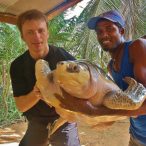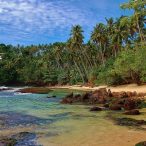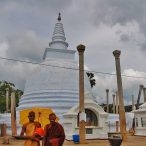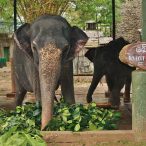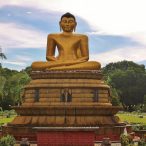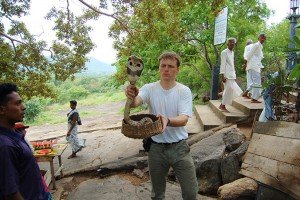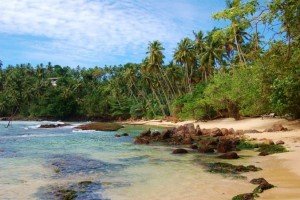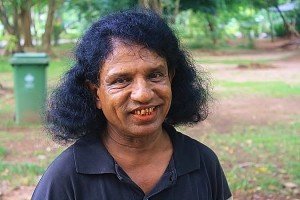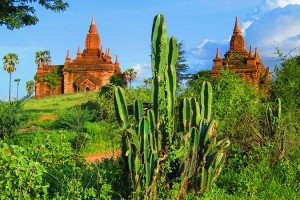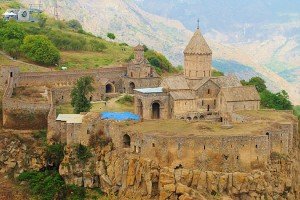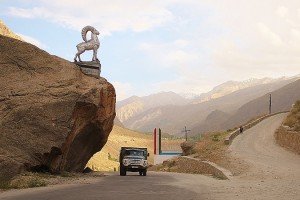Sri Lanka
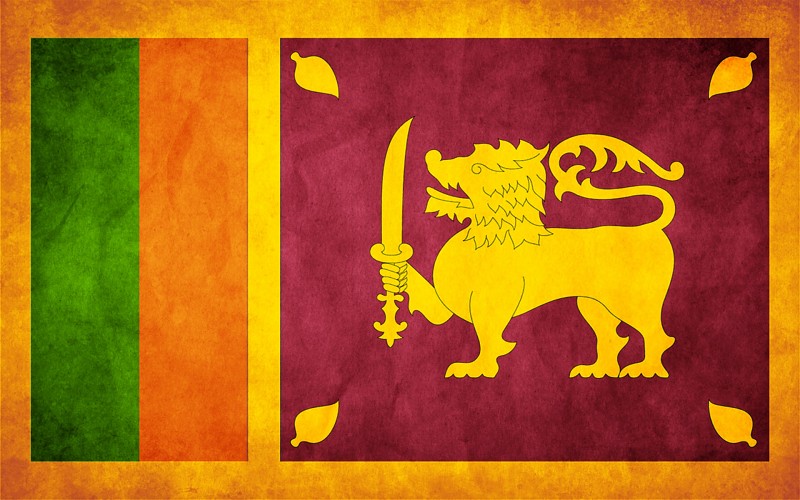
Official name: Democratic – Socialist Republic of Sri Lanka
Population: 21 000 000
Area: 65 610 km²
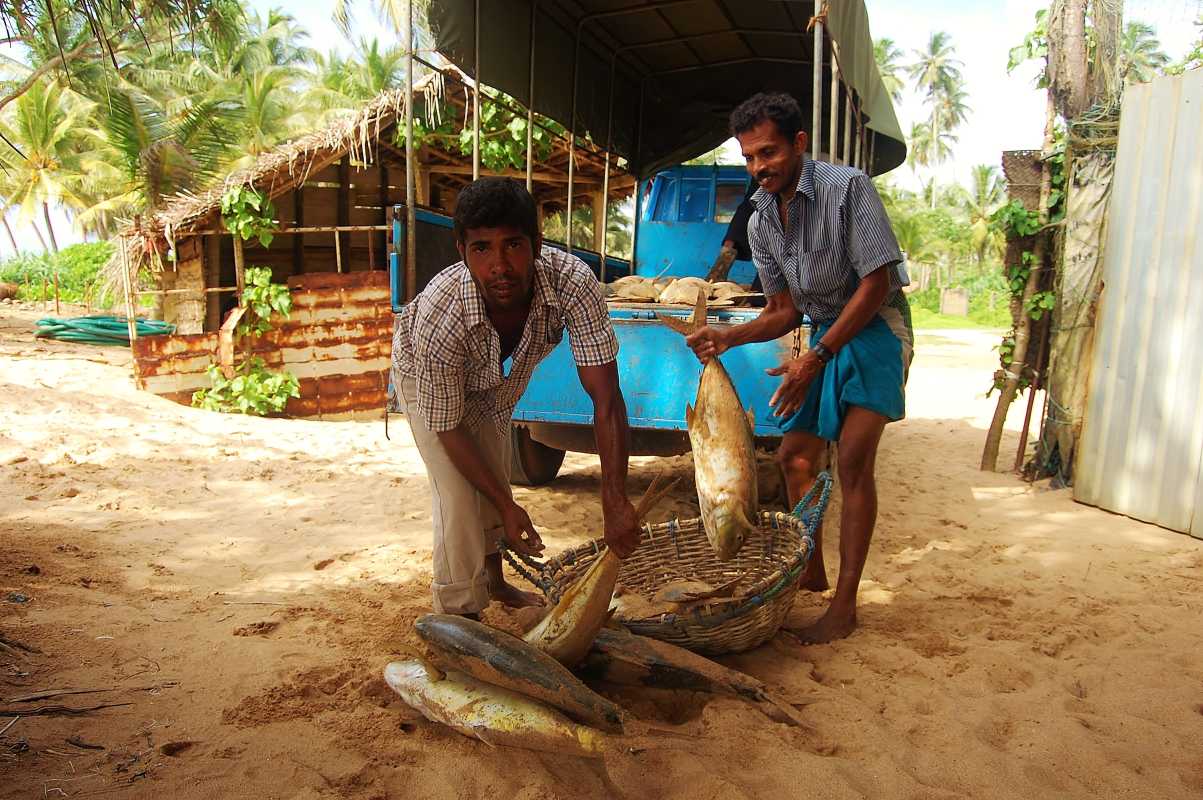
Gallery
I visited Sri Lanka in 2008, where bloody fighting between the government army of Sri Lanka and the Tamil Tigers was still on. Soon after my departure the Tigers put down their weapons, and it was clear that Sri Lanka will not be divided.
News from Sri Lanka at the bottom, under the article.
Tourist attractions of Sri Lanka, Sri Lanka – the present times, war against the Tamil Tigers, history of Sri Lanka.
Tourist attractions of Sri Lanka
Sri Lanka (Ceylon) is called the Pearl of the Indian Ocean because of its shape and location. Sri Lanka is a famous tourist destination, because of its fairy tale beaches and turquoise waters, and palm trees leaning to the sea. Sri Lanka is also reach in picturesque landscapes, mountains, tropical forests and a very reach flora and fauna. It`s been calculated that Sri Lanka is a home to three subspecies of an Asian elephant, and it is inhabited by 6000 of those biggest animals in the world. You can also admire here a 2000 year old art and history, beautiful tea fields, and enjoy the general beauty of the island. In many national parks spread around Sri Lanka, among many other animals there are leopards, elephants and crocodiles, although you can also see many species of rare birds, snakes and lizards. I’ve noticed that even without entering national parks, the exotic nature beats with its richness, and even in ordinary streets you can see a beautiful flora and fauna. I`m talking here not only about very common palm, mango and banana trees. On my eyes a bird snatched a little lizard few times, and a big monitor lizard was crossing a street to cool down in a rice field. Based on the fact that Sri Lanka has the highest rate of biodiversity per 10 000km2 in the whole of Asia, 24 national parks in this small island, and many endemic animal species, including 250 species of birds living in this natural paradise, Sri Lankans do not realize what kind of richness they are surrounded with. It is also worth mentioning that the natural beauty can be easily lost and Sri Lankan governments have not been saint. In 1920s for example 49% of Sri Lanka was covered by forests, and today it is only 24%.
Sri Lanka is a Buddhist country what in my point of view is a nice and relaxing philosophy of life, which doesn’t even have to be advertised as a “religion of peace”. Throughout centuries a lot of beautiful temples have been built over here, which are typical to the style of Sri Lanka. I have to remind that Buddhist architecture differs a lot depending on culture and style of a chosen country, and that`s why Buddhist temples in China, Thailand or Burma are completely different than those in Sri Lanka. Worth recommending are for example the temples of Dambulla, and a big rock temple Sigiriya. There are also ruins of the ancient cities called Polonnaruwa and Anuradhapura, and the famous “Temple of tooth” in Kandy. To more ambitious travellers (like me) I recommend a 14km steep climb upstairs, to the Buddhist temple on the top of the Adam`s Peak (Sri Pada), which offers magnificent views. Then, going through tea fields, waterfalls and banana trees, we go by an “antique” bus to the paradise beaches, at a crazy speed of 20km/h. In Sri Lanka also the food has a great importance to travellers. Mango and papaya you can pick straight off a tree, although they are so cheap that they are not worth picking. There are also coconuts, fresh fish and meals based mainly on rice and Indian dishes.
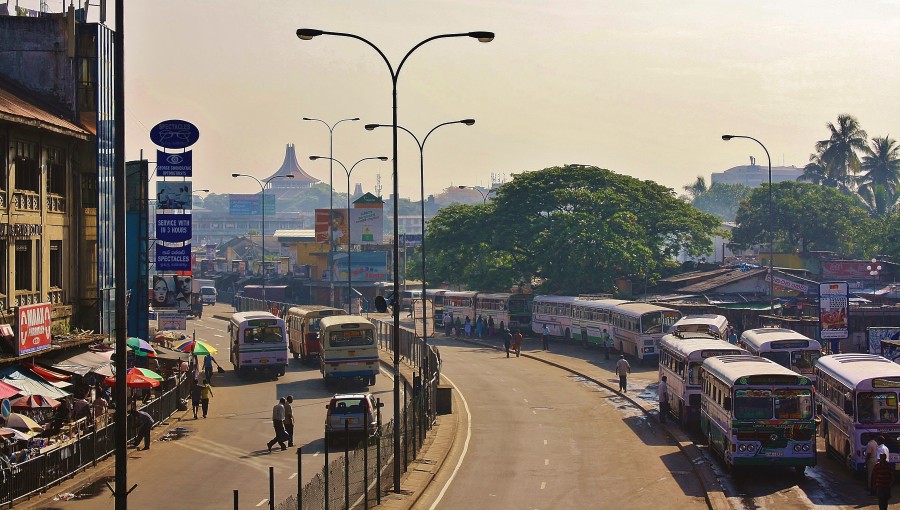
View of a busy street in Colombo. Sri Lanka.
Although Sri Lanka is politically divided into eight provinces, in terms of tourism I divide it into several parts, and these are: Colombo, East Coast, South Coast, West Coast, Jaffna and the North, the Hill Country and the Ancient Cities.
Sri Lanka – the present times
Economy/Poverty of Sri Lanka
In Sinhala language “sri” means beautiful and “lanka” means island. Sri Lanka is therefore a beautiful island located on the Indian Ocean, right at the end of the Bay of Bengal. As for standard of a developing country, and especially as for a country of the Indian Subcontinent it is not so bad, but comparing to developed countries it is still a very poor country. Few people here earn big money. Most are poor or very poor. The average salary is $100-$150 U.S. even though many people are much poorer and have no chance of any employment at all. I can see it whilst walking around the full of beggars Colombo, who ask me for a few rupees. At night people sleep rough on the ground in the street outside a train station and my hotel. However comparing to the neighbouring India or Bangladesh, the economical state of Sri Lanka is still better. During the British colonial times Sri Lanka benefited because it became an important trading port, what was also used after gaining independence in 1948. Then there was the unfortunate socialism, what meant that all companies and plantations were taken over by the government. However in 1977 the Sri Lankan government understood that socialism was a tragic mistake, and that`s why they started promoting a private property, to simply inject life into economy. Today Sri Lanka is the third largest exporter of tea after India and China, and it also produces and grows: precious metals, cacao, rubber, rice and coconuts which are used for everything on the island. I recommend my article 100 ways to use a coconut.
The most popular is the Ceylon tea, which is a national trademark of Sri Lanka, and it is considered the cleanest tea in the world. Despite that crops are very important, Sri Lanka also started to develop its industry. Textile industry was developed to a good degree, but also telecommunications, finance and food processing are also very important. Apart from the Ceylon tea, which is well known to the whole world, Sri Lanka also exports coconuts, rice and clothes. Also the more and more important industry of the “Beautiful island” is the tourism industry, which Sri Lanka has dream conditions to, and after the war has finished it should be only better. I also think that reestablishing the ferry service from Rameswaram (India) to Tallaimannar (Sri Lanka) would even make Sri Lankan economy stronger because of its trade with India, which is already the its biggest trading partner. The ferry would also enable an easier income for the local people, not only for the government. Especially taking into account that the north of Sri Lanka is the poorest because of the war. Because of all the advantages that Sri Lanka definitely has, and the fact that the neighbouring India is the “never satisfied market”, in my opinion Sri Lanka is in the best situation out of all countries of the Indian Subcontinent. Help to the Sri Lankan economy also provides the national carrier – Sri Lankan airlines, and the fact that about 1,2mln Sri Lankans work abroad.
Since 2005 poverty in Sri Lanka has shrunk from 15% to 8%, and unemployment from 7,5% to 5%. Nearly 90% of the population has access to fresh water, and in 2010 Sri Lanka was recognized as a rising economy, and it was included to the 3G countries (Global Growth Generators) which is a list of third world countries with the best prospective for economic growth. The same list also showed that the other countries of the subcontitent stay behind – apart from India which should be one of the richest in the world but its people are the poorest.
Sad reality of Sri Lanka – more news
Despite such favourable economic data I refrain from getting too excited, because numbers don`t show the whole truth. In the Colombo districts of Fort and Pettah poverty is overwhelming. People walk barefoot, carrying heavy wheelbarrows with vegetables, and beggars a desperate for a few rupees.
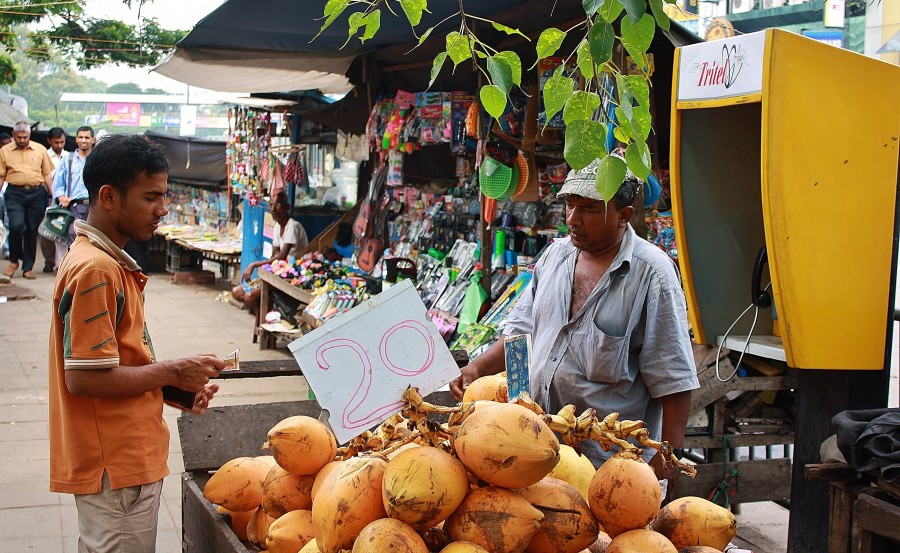
Sale of coconuts in Colombo. Sri Lanka.
Despite good economic data people of Sri Lanka are very poor and even desperate for any money at all. When I was on the Mount Lavinia beach 4 years after tsunami, the government still did not build the promised houses, and people had to live in self made tents blown away by a strong wind. On the other hand however, ironically they had a view at a very rich hotel which looked like a monument of money. I gave them 50 rupees for a kilo of rice because I was really sorry for them, although president Rajapaksa looks fatter on every picture. Sri Lanka is a poor country of poor people where drugs are sold vulgarly, where exist the cult of the probably eternal president whose pictures are on every corner of the country, and where police in Colombo patrol the city like vultures looking for additional income. People were the most interested what kind of money is in my country and they tried to extort it from by deception all the time. In Sri Lanka you can`t believe in anything. The same as in India and the Arab countries, lying is the every day bread, although I want to stress that are a lot of honest Sri Lankans too. Let`s just not believe in the official data too much.
People have always peaceful attitude, but a tourist has to bargain fiercely, and not get fulled by false school and hospital donations, which are only a away to extort money. I have to admit that I’ve been to all countries of the Indian Subcontinent but I’ve never seen people who would be as money hungry as Sri Lankans, and I’ve not seen a government which would push “the White man’s prices” over such limits. Tourists pay much more than locals for entrances to all places of interests, and a price ticket to the zoo in Dehiwala is a daylight robbery. Another big problem is a drug selling plague in all tourist places. The same problem exists in India, however in Sr Lanka this problem has reached a different level, and if it goes this way soon Sri Lanka will have to change its name into Drug Lanka. A firm “no” answers usually solves the problem.
Apart from that Sri Lanka is a beautiful country which I recommend.
Education in Sri Lanka
As per standards of a developing country education in Sri Lanka is also very important and 92% of Sri Lankans can read and write, what is the highest rate of South Asia and one of the highest of the entire Asia. For a simple comparison, literacy level in Poland stands at 99,7% and in the UK at 99%, although I presume that due to mass invasion of dark-skinned analphabets it will get worse. What I`ll say now is not a joke at all, but: literacy in India stands at mere 74%, in Nepal and Bangladesh just above 60%, and in Pakistan 56%. The British Empire did a lot of good for Sri Lankan education, which fell a little after introducing (the always dirty) socialism. Education is free and it is one of the fundamental values in Sri Lanka.
Health care of Sri Lanka
Even though poverty in Sri Lanka has shrunk by 50%, there is still a big child malnutrition because 30% of all children are underweight, and 58% of infants are anemic. I`m wondering then what Sri Lankan government does with all the money, because they definitely do not feed their children???!!!
There is also HIV/AIDS problem in Sri Lanka, but with the neighboring India it is difficult to “compete”. In Sri Lanka there are about 3,000 people living with HIV, of which only half are reported. The problem here is in lack of knowledge and fear of rejection by the society. The infection level is growing 0.1% per year. The main forms of infection are: sex with multiple partners, homosexuality, and to a lesser extent prostitution and injecting drugs. Many do not use condoms and it has been calculated that there are about 30,000 prostitutes in Sri Lanka. In my opinion especially homosexuality is becoming a plague, especially that it is tolerated by all the ultra-liberal governments around the world. In addition to the above, there is tuberculosis and poisoning due to dirty water. Malaria in Sri Lanka is only in the northern and eastern areas, but there are less infections than before. Sri Lanka is a country of low malarial risk.
Culture/Religion of Sri Lanka
The non-aggressive Buddhism (70%) with the admixture of Hinduism is also a cultural asset of Sri Lanka what for example I cannot say about the religion in Pakistan. In Sri Lanka there are many attractive Buddhist temples of which the most famous is the Temple of Tooth in Kandy. The presence of Buddhism is widely visible in the Sri Lankan culture. The national sport is cricket. All the dishes are based mainly on rice, coconuts and fish.
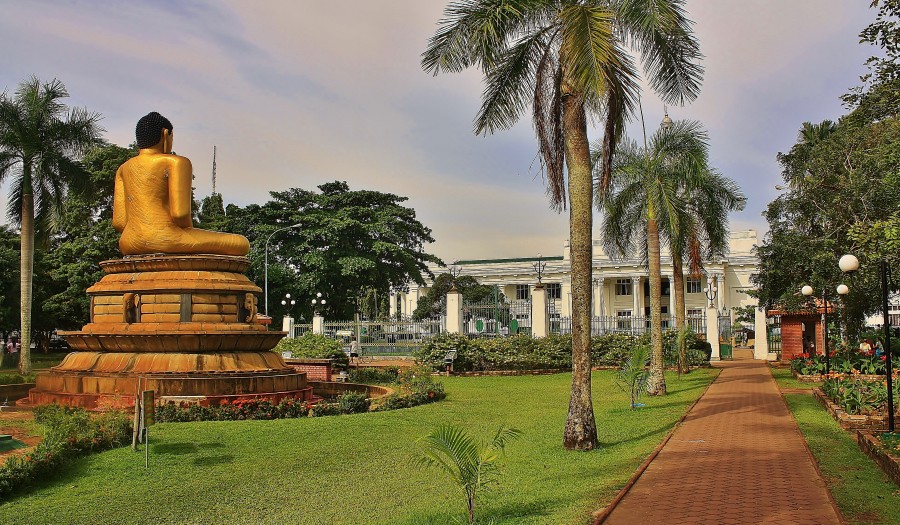
Viharamahadevi Park located in Cinnamon Gardens. Colombo, Sri Lanka. (When Sri Lanka was a colony of Great Britain, under the name Ceylon, this park was called ‘Victoria Park’).
Freedom of speech in Sri Lanka
There is no press freedom in Sri Lanka. Journalists have been already beaten and killed and although they know who was behind it, Sri Lankan newspapers are simply afraid to talk about it openly. On the press freedom index Sri Lanka takes 163rd place. Reading newspapers in Sri Lanka does not make any sense. It’s a pure fiction. (On the other hand, in the Kingdom of Political Correctness it is the same.)
Environmental problems of Sri Lanka
Based on the fact that Sri Lanka has the highest rate of biodiversity per 10 000km2 in the whole of Asia, 24 national parks in this small island, and many endemic animal species, including 250 species of birds living in this natural paradise, Sri Lankans do not realize what kind of richness they are surrounded with. It is also worth mentioning that the natural beauty can be easily lost and Sri Lankan governments have not been saint. In 1920s for example 49% of Sri Lanka was covered by forests, and today it is only 24%. The biggest problem is deforestation, although there are other problems such as: the environment and wildlife are endangered due to jungle deforestation and urbanization, pollution of coastal areas because of mining, air pollution in Colombo, lack of proper waste disposal, water poisoning caused by chemical spills from factories. As you can see the beauty of Sri Lanka is at risk.
History of Sri Lanka
Before travelling to a new country I always learn about its history because it gives me a better understanding of the people, sights and culture. History always responds to a lot of my questions, what makes my travels even more interesting.
Historical data mention that the first inhabitants of the island lived here in the sixth century BC. In the beginning it was the Indus tribe coming from northern India, who led by the Sinhalese conquered the island and named by the same name. The Sinhalese country experienced its splendor in the times from 200 BC to approximately 1200 DC. Kingdom of Sinhalese (Buddhist) had his capital in the city of Anuradhapura, and why to this day in and around the former kingdom, we can admire the beautiful statues of Buddha, temples and caves, with frescoes dating back more than 2000 years ago. The Sinhala kingdom build for example complicated irrigation systems which in those times was a big achievement. Then there was a time of Tamil (as the state in southern India), Malay and Muslim attacks, which pushed the Sinhalese kingdom to the south of the island and split it into several feudal principalities. The heaviest attack came at the turn of the XI and XII century which forced the Sinhalese to settle further south in the mountainous parts of the island. This time the center of the kingdom was located around the town of Kandy, where today we can admire the impressive temples from the XI century.
The next stage in the history of the island were the European colonial times. In 1505 the island was conquered by the Kingdom of Portugal, but in the middle of the XVI century the Dutch began to displace them. Their reign lasted until the end of the XVIII century, when the island was taken over by the United Kingdom. At that time, the Kingdom of Kandy remained independent until 1815, when the British defeated the last king and established a royal colony of Ceylon. (For this reason, when writing about the history of this country I used the term “island”, because then it was not yet Sri Lanka or Ceylon). Although initially the grew coffee, soon after an outbreak of disease, the colonial economy quickly switched into tea plantations (around Kandy), but also rubber and coconuts. Gradually the British crown gave Ceylon a relative but still limited autonomy, and the breakthrough came after World War II, when intensified uprising against the colonizers set Ceylon free. Finally, on the 4 February 1948 Ceylon gained independence, and in 1972 the country`s name was changed to the Socialist Republic of Sri Lanka, to soon change it again to the Democratic Socialist Republic of Sri Lanka.
Tsunami 2004
On the 26th December 2004 there was the largest in nearly half a century underwater earthquake, that triggered tsunami. It caused damage not only in Sri Lanka but also in Thailand, Indonesia and the Maldives. The tsunami killed about 300,000 people. In Sri Lanka about 40,000 were killed and many were lost, and the island itself, the coast especially, and its economy suffered badly.
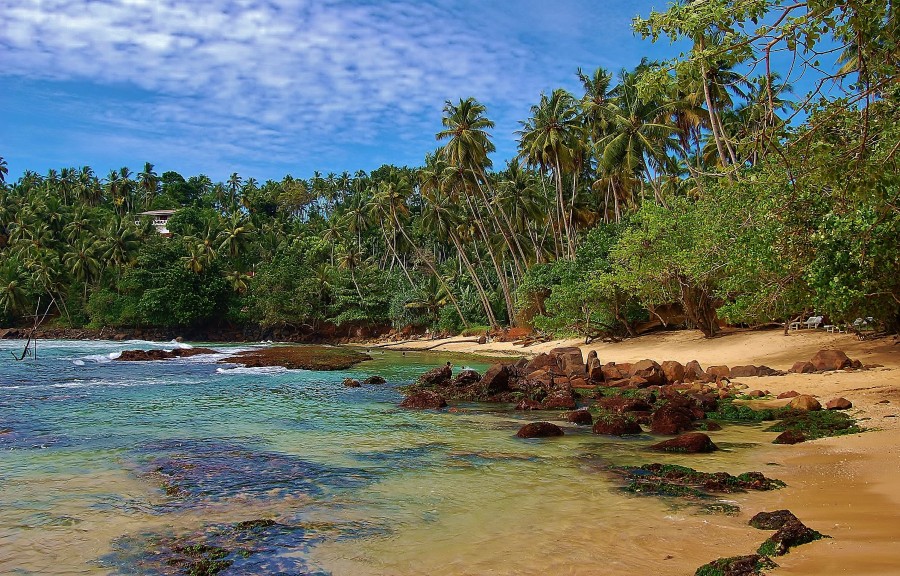
Mirissa. This is the beauty of Sri Lankan beaches.
(I left Southeast Asia on the 23 December 2004. If I had been there only 3 more days, now I would not write this report!) I also wrote an article about the tsunami in my 2004 expedition.
News from Sri Lanka
TAMIL TIGERS LOST THE CIVIL WAR
(June 2009)
For decades there was a conflict between the Tamil Tigers, who captured the north of the country and the government’s army based in Colombo. The ceasefire which was signed in 2001 was already broken so many times that it became fiction. The civil war continued when I was still in Sri Lanka and the evidence of it I saw whilst walking around Colombo. There were kidnappings, money extortion and a whole variety of crimes. Conflict with the Tamil Tigers was so violent that when Sri Lanka was destroyed by tsunami, instead of uniting in the face of such a disaster political filth began to come out what inflamed the conflict even more. Tamil Tigers accused the government in Colombo of lack of support to Tamils and the war grew in strength.
When I came back from Sri Lanka there was a breakthrough there in 2009. The 26 year war against the rebels (LTTE) was at last finished. Better equipped and bigger Sri Lankan army started getting back more towns in the north of the island, and finally the rebels whose specialty were bomb blasts gave up. Their leader got killed and the outnumbered Tigers put down their weapons. There were also refugee camps in the north because the rebels were using the people of the north as their life shields against the army. 75 000 people died during that war. Now it is obvious that Sri Lanka will remain one country. It will not be divided.
It is worth noting that an important role in this war was played by the “Big Brother of Sri Lanka” – India, which for decades had changed its attitude to the Tamil Tigers; from the Tamil guerrillas training and funding the Tamil Tigers to the open support for the Sri Lankan government against the Tigers. First Rajiv and then his daughter Indira Gandhi gave a great show of political naivety and weak characters which plunged Sri Lanka for 26 years and probably for another 26 to rebuild the economy and infrastructure in the northern regions of the island. That way the Gandhi clan helped to destroy its economic partner on the island and at the same time it also helped to destroy the economy of the southern India and increased the already enormous Indian poverty.
♦
“PEARL OF THE INDIAN OCEAN” ….. goes bankrupt
(April 2022)
SRI LANKA is a very attractive country for tourists. This small island has beautiful beaches, jungle waterfalls, dramatic rock formations, scenic views, elephant riding, and a very rich exotic fauna and flora. Sri Lanka, for such a small island, also has a very rich cultural and architectural heritage left by their ancestors. In Sri Lanka there are spectacular Buddhist temples, caves with frescoes and Buddha statues, old Buddhist cities, and even large Buddha statues carved into the rocks. In that respect, I believe that Sri Lanka is really the ‘Pearl of the Indian Ocean’ and the wonderful exotic nature is visible at every turn.
On the other hand, I was disappointed with the mentality of the people of Sri Lanka. When I travelled there many years ago, I experienced notorious attempts of money extortion, and I was faced by gangs of fraudsters. They collect cash for hospitals and orphanages which don’t exist. Fraudster coming up in front of me want to show me a ‘wonderful temple which is 1000 years old’ – and which does not exist. Everyone is involved in this crime: from a bootblack, through a coconut trader, to passers-by in white collars. In addition, Sri Lanka also has a “white man price”, what means that white people have to pay 100 times more to enter places of interests. For example, entrance to the zoo in Colombo for Sri Lankans is 50 cents, and for me it was $25. A refugee from Ukraine fleeing the war would also have to pay that much, because the color of his skin already ‘proves his countless riches’. Sometimes it is difficult to chase away intruders. Such is also the reality of India. I wanted to tell about the both sides of this country !!! However, I would like to point out that I don’t consider 22 million Sri Lankans to be fraudsters. I’m just saying that in Sri Lanka this problem is more frequent than for example in Pakistan or Nepal. This fact takes away the beauty of that country.
Still, I feel sorry for those people, especially that Sri Lanka could be one of the best developing countries of South Asia. Sri Lankans are ruled by a socialist political caste where power passes through the family line. In 1948 Ceylon regained independence from Great Britain, then there was a civil war for 30 years, then tsunami in 2004; and finally Covid after which Sri Lanka went bankrupt to the rock bottom. Today Sri Lanka is a tourist paradise without tourists, which turned out to be a terrible blow to this nation. Sri Lankans are also not allowed to travel abroad to work, which has exhausted their foreign exchange reserves. Sri Lanka is a country that may file for bankruptcy in 2022. Sri Lanka is unable to pay for food, oil, gas, and medicine imports. It’s very bad. India gave Sri Lanka $500 million for petrol, but this is a drop in the ocean of needs, considering the debts. In my opinion, Sri Lanka is facing either hunger and poverty, or a ‘Chinese trap’ that would milk that country completely.
The realities are: the Sri Lankan rupee has lost 30% of its value, 500.000 people live below the poverty line, there is a financial crisis and humanitarian crisis, constant sanitary terror, there are long lines for basic products at high prices, and rising unemployment. According to the Financial Times, Sri Lanka’s foreign and public debt is over $50bn, so it has doubled over 10 years. We shouldn’t be surprised that the import of basic goods to Sri Lanka has fallen on its face, if the country is unable to pay. In my opinion, the ruling mafia of Sri Lanka will try to borrow billions of $$$ from the World Bank on interest, and then borrow again and again. The government of Sri Lanka is the problem.
HOW TO HELP SRI LANKA?
Certainly not to bring 20 million Sri Lankans to Europe. To start with, let Europeans go to Sri Lanka on vacation, and let them be treated fairly by the locals. If however, whites are treated like cash machines which are to be broken into, Sri Lanka will only lose. In 2021 Sri Lanka was visited by only 195 thousand tourists, and before Covid in 2019 there were as many as 1.9 million tourists. Tourism is currently the only way Sri Lanka can increase its foreign exchange reserves, but that’s not enough. Sri Lanka needs foreign investment, a complete reconstruction of its economy, and it needs to get rid of the selfish mafia that has no idea of the economy. As usual, ordinary people will pay.
So POLES and BRITS: I would like 3 million of you “white millionaires” to go to Sri Lanka. You will definitely help. Tourism actually saves the lives of many poor countries. I will visit Sri Lanka again, but I’m afraid that it could be very unpleasant, because people would be more desperate. You can quit your job and go there for a few months. It is much cheaper over there than in England, so the longer you stay there, the more you will save on living in expensive Britain.
♦
NOT ONLY SRI LANKA GOES BANKRUPT (The RESULT after Covid-19 – long post but it’s worth it!)
(June 2022)
When I spoke to an English doctor that Covid-19 was a planned, international conspiracy to impoverish the world, cause famine, depopulation and deepen control – he accused me of schizophrenia. Now he’s become softer, because he can see what is happening himself, but he still says that I am the one who is sick, not him.
https://www.compasstravelguide.net/the-politics-of-truth/the-political-virus-covid-19-part-i/
I have already written about Sri Lanka many times on the Kompas website and on Facebook account. Sri Lanka is a small, seemingly paradise island that has a huge ancestral cultural heritage, natural beauty (and many scammers … unfortunately).
This beautiful country relied heavily on tourism, but it also produces rice and probably the best and purest tea in the world (Ceylon tea). Unfortunately, the Sri Lankan government banned the use of pesticides for ‘climate protection’, which led to the collapse of agriculture and famine. Sri Lanka’s closure to tourism has depleted its hard currency reserves, and now Sri Lanka has no money to pay for importing food and petrol. Without the 2 million ‘white racists’ like me every year, Sri Lankans have become very impoverished. Currently in Sri Lanka houses of politicians are on fire, there are brutal demonstrations, children and teachers do not go to schools because there is no petrol in buses, and cheap bars don’t serve food.
!!! CURRENTLY 1.6BLN PEOPLE IN 96 COUNTRIES FACE HUNGER, financial collapse and a lack of energy supply – what leads to physical and mental illness and death, including suicide. I still want Europe to be only for white people, but I also want happiness, peace and prosperity for everybody else. Sri Lanka had every chance to become the economic tiger of its region.
OTHER COUNTRIES ON THE WAY TO BANKRUPTCY:
– Zimbabwe is an extreme case. There inflation is 130%, and in 2008 there was a hyperinflation of 500 billion percent.
– Afghanistan. About half of the country’s 39 million population is threatened with starvation. Men sell their 10-year-old daughters to arranged marriages in exchange for paying off their debts.
– Argentina. Inflation 70%. 4 out of 10 Argentines are so poor that they rely on food banks.
– Egypt. Inflation 15%. 103 million live in poverty.
– Lebanon. In 2021 the currency of Lebanon lost 90% of its value. Internal problems keep growing. https://www.compasstravelguide.net/countries/lebanon/
– Burma (“The Land of Golden Pagodas”). A beautiful country, but very poor. 700,000 people have been internally displaced by the terror of the military junta that rules Burma. Terrible debts and inflation. https://www.compasstravelguide.net/countries/myanmar-burma/
I could go on for so long. Other countries on my list are Laos, Pakistan, Venezuela, and Turkey (inflation around 60%, unemployment, Turkey’s foreign debt is 54% of its GDP). There are also countries in Africa and South America; where poverty, terrorism, banditry, drug cartels and rape are something people have already got used to, because they have lived that way for generations. https://www.compasstravelguide.net/countries/laos/; https://www.compasstravelguide.net/countries/pakistan/
Too many people started waking up, for the global regime to tolerate it. This crisis was needed by the world finance to maintain world power !!!
Travel reports
Map
Location
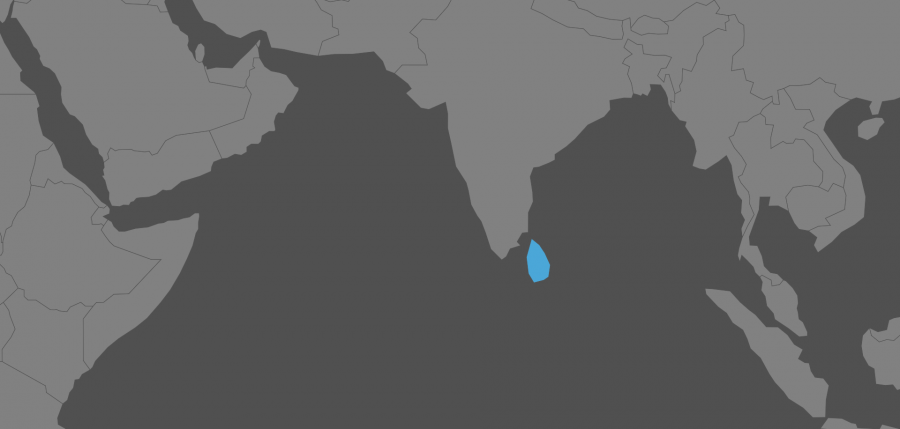
Practical information
Tourist Visa: Polish, UK and all EU citizens get free visa at the airport in Colombo for 30 days. If someone wants to stay longer, there are two options. Get visa in the Sri Lankan consulate somewhere in Europe for 50USD, and you can stay up to 3 months, or cross the border of Sri Lanka for free, on a 30 day visa and extend your stay in Colombo. I strongly advise you to get the desired visa in Europe to avoid the hassle.
Safety: safe country for tourists. I do not advice to go to Jaffna and the north because of the war with the Tamil Tigers, which ended in 2008. When I was on this island, the military frequently checked my passport what wasn’t very pleasant, but it was always safe. I did not experience any theft. There is only trickery and deception, such as fake donations to schools or hospitals, which do not exist. There are also tickets where the price has a wrong number of zeros.
I presume that Jaffna and the north will soon become a highlight of Sri Lanka and a covenient causeway passage to India.
Moving around the country: Sri Lankan transport can seriously test your patience. In general, buses and trains are very slow and 60km/h top speed in the lowlands is a maximum speed. In the hill country bus travels with an average of 20km h, so going through 100km, with all the stops, breaks for tea, loading of goods, military controls and bad roads, could take a whole day. The good news is that transport in Sri Lanka does exist, and eventually you will always get from point A to point B.
Prices: (for 2008 when £1 = 200 LKR) Sri Lanka is a cheap country, although slightly more expensive than neighboring India. For a nice room by a beautiful beach I paid about 6-8USD, but few times I paid only 3USD. It is always a matter of bargaining, depending on the length of stay and a state of the room. For meals I paid about $1-$2, although including snacks during a day it is approximately $5. Mango cost about 10 rupees and coconuts 20 rupees and less, or nothing if you get it straight off a tree. Sri Lanka is beautiful, just as Sri Lankan price. I recommend my report “How to live in Sri Lanka.” I do not think that prices have grown dramatically over few years.
Climate: in the north of the island the climate is tropical and in the south equatorial. Generally, monsoon shapes the climate of the island, because it blows from a different direction, depending on the season. Average annual air temperature ranges from-300C to 260C, and in the mountains from 150C-200C. My advice however, is to be prepared for greater heat because Sri Lanka is a hot country with a pleasant breeze from the ocean. Even in the coldest time of the year the water temperature never drops below 240C.



